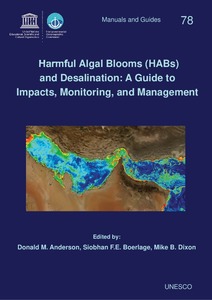World Health Organization and International Guidelines for toxin control, Harmful Algal Boom management, and response planning.

View/
Average rating
votes
Date
2017Author
Soltani, Alex
Hess, Philipp
Dixon, Mike B.
Boerlage, Siobhan F.E.
Anderson, Donald M.
Newcombe, Gayle
House, Jenny
Ho, Lionel
Baker, Peter
Burch, Michael
Status
Published
Metadata
Show full item recordAbstract
Drinking water guidelines are designed to protect public health and the safety of drinking
water supplies by suggesting safe levels for constituents that are known to be hazardous to
health. The World Health Organization (WHO) Guidelines for Drinking Water Quality
(WHO 1996; 2004) represent a scientific consensus on the health risks presented by microbes
and chemicals in drinking water and are often used to derive guideline values for individual
countries, states or regions. The guideline values are to be used in the development of risk
management strategies and are associated with guidance on monitoring and management
practices.
Although no human deaths due to the consumption of cyanotoxins have been recorded,
cyanobacteria and their toxins remain a significant issue for the WHO, since extended exposure may cause gastroenteritis, among other more serious health impacts
(NHMRC/NRMMC 2011). In addition, cyanotoxins are suspected to have resulted in
fatalities when introduced .....
Title of Report
Harmful Algal Blooms (HABs) and Desalination: a Guide to Impacts, Monitoring and Management.Editor(s) of Report
Anderson, D.M.Boerlage, S.F.E.
Dixon, M.B.
Page Range
pp.223-250Publisher
Intergovernmental Oceanographic Commission of UNESCOParis, France
Series;Nr
Intergovernmental Oceanographic Commission Manuals and Guides;78Document Language
enSustainable Development Goals (SDG)
14.1Best Practice Type
ManualCitation
Soltani, A.; Hess, P.; Dixon, M. B.; Boerlage, S. F.E.; Anderson, D. M.; Newcombe, G.; House, J.; Ho, L.; Baker, P. and Burch, M. (2017) World Health Organization and International Guidelines for toxin control, Harmful Algal Bloom Management, and response planning. In: Harmful Algal Blooms (HABs) and Desalination: A Guide to Impacts, Monitoring and Management. (eds. Anderson D. M.; Boerlage, S. F. E. and Dixon, M.B.) Paris, France, Intergovernmental Oceanographic Commission of UNESCO, pp. 223-250. (IOC Manuals and Guides No. 78). DOI: http://dx.doi.org/10.25607/OBP-313Collections
 Repository of community practices in Ocean Research, Applications and Data/Information Management
Repository of community practices in Ocean Research, Applications and Data/Information Management